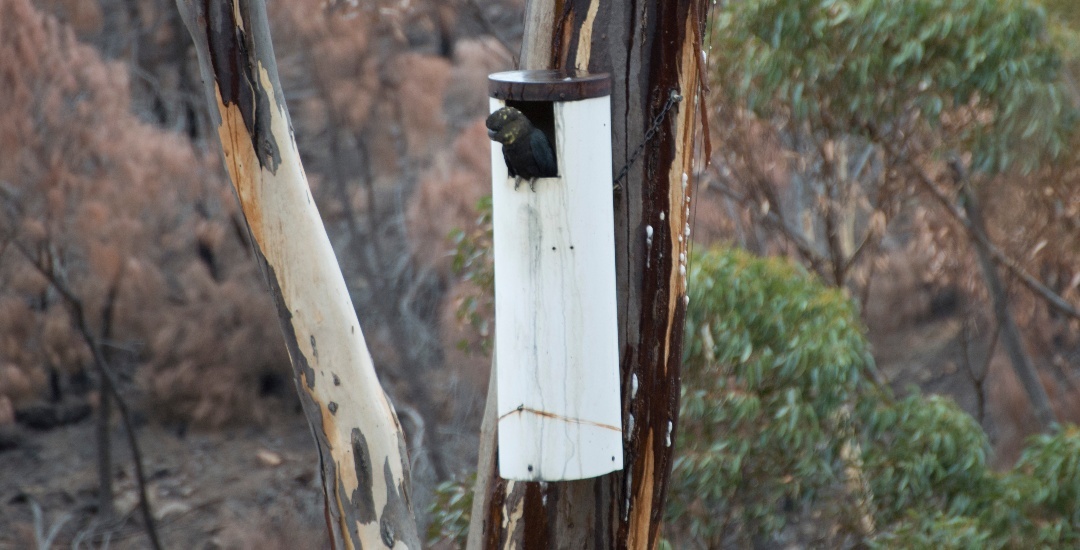
Find out how Kangaroo Island’s glossy black-cockatoos are going after the bushfires
Three-quarters of KI’s glossy black habitat burned in the summer bushfires. Find out about the species’ recovery.
Glossy black-cockatoos are only found in two sections of the country – from eastern Queensland to Mallacoota in Victoria and on South Australia’s Kangaroo Island.
Kangaroo Island has a super special subspecies of the endangered glossy, which is smaller but has a bigger bill than the subspecies that occurs along the east coast of Australia. Our Kangaroo Island glossies pretty much only eat drooping she-oak tree seeds too.
This summer’s bushfires had a huge impact on this special species. Here’s everything you need to know about these cockies, their habitat and how they are recovering:
Pre-bushfire population
Before the bushfires, Kangaroo Island was estimated to only have about 370 glossy black-cockatoos, congregating in seven main flocks.
Five of these flocks relied almost entirely on habitat in the bushfire-affected area for feeding and nesting, while another flock only has part of its habitat in the area. The seventh flock is based mostly on the eastern end of Kangaroo Island.
Be in the know: Read our our blog about the recovery efforts that have been underway since 1995 when there were only 150 glossies on the island.
Kangaroo Island bushfires
The 2019 – 20 bushfire event on Kangaroo Island was the largest in the island’s recorded history and burnt more vegetation than any other bushfire on the island.
About 200,000 hectares of the 440,500 ha island was burnt – that’s almost half the island.
Post-bushfire population
About 75 per cent of SA’s endangered glossy black-cockatoo population lived in the bushfire zone and a significant percentage of its known feeding habitat was burnt.
The exact number of native animals that perished has not been confirmed.
On 11 February the Commonwealth Government named the glossy black-cockatoo as one of the top 10 bird species under threat following the bushfires.
Glossy black recovery effort
Long-term recovery actions are underway including building and installing new nest boxes and planting she-oak trees.

The remaining glossy-black cockatoo population is being monitored to better understand flock movements following the bushfires, and a glossy black population count will be carried out in spring 2020.
Watch this video from 7 News Adelaide to find out more.
How can you help?
To help support the recovery of species like the glossy black in parks, you can donate to the National Parks and Wildlife Service South Australia and the Nature Foundation’s Wildlife Recovery Fund or donate to the special Glossy Black Cockatoo Recovery Program.
What other recovery work is underway?
A Wildlife and Habitat Bushfire Recovery Plan is currently being created for South Australia in partnership with the Wildlife and Habitat Recovery Taskforce and input from leading threatened species ecologists, experts from the island, conservation groups, KI community and Australian and SA government representatives.
To learn more about how species are recovering after the bushfires on Kangaroo Island, read our blog about the endangered KI dunnart. You might also be interested in learning about the important role bushfires play in biodiversity.
(Main image courtesy of Ross Evans)